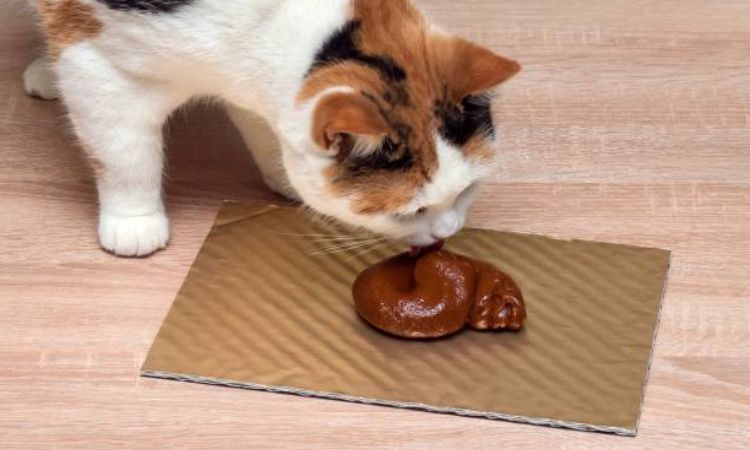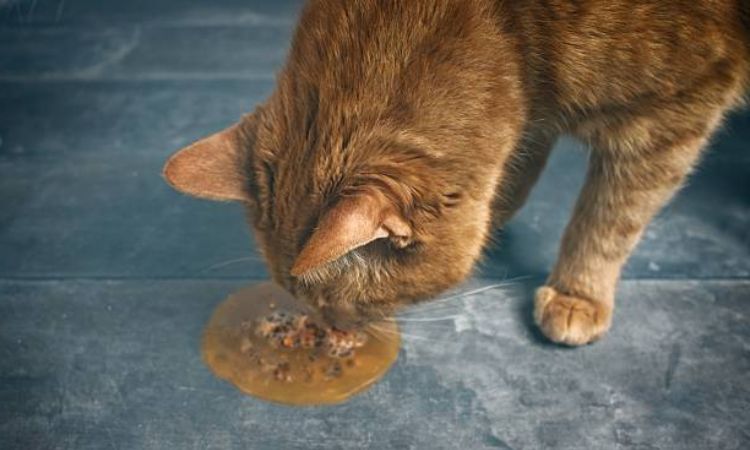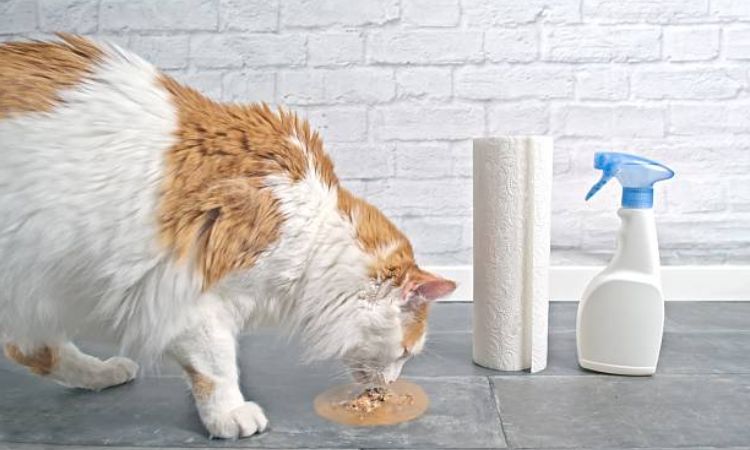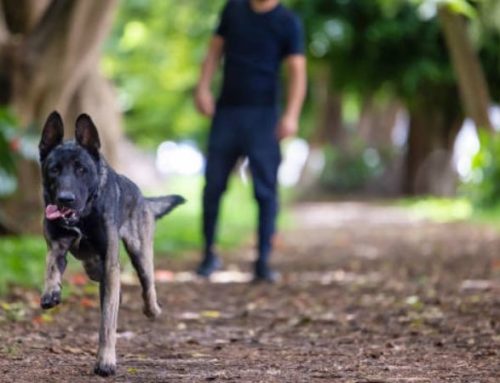You’re relaxing at home when suddenly your cat leaves behind a puddle of brown liquid—and you’re left wondering what it means. While it may look alarming, the color often comes from bile or partially digested food.
Sometimes the cause is simple, like hairballs, but it can also signal more serious problems such as intestinal blockages or pancreatitis. So how do you know the difference? Let’s take a closer look at why your cat might be vomiting brown liquid and when it’s worth a trip to the vet.
Common Causes of Brown Vomit in Cats

1. Hairballs and Indigestion
Cats groom themselves daily, and in the process, they often swallow loose fur. When too much fur collects in the stomach, it can form a hairball that irritates the digestive tract, sometimes leading to brown vomit. Indigestion from eating too quickly or consuming something that doesn’t sit well may cause similar symptoms. While usually mild, frequent vomiting from hairballs or stomach upset should still be monitored, as it may point to underlying issues.
2. Dietary Causes
Food-related problems are another common culprit. Cats that eat too fast may regurgitate food mixed with bile, which can appear brown. Spoiled food, sudden dietary changes, or sneaking table scraps can also upset a cat’s stomach. In more serious cases, ingestion of toxic foods—such as chocolate, onions, or grapes—can cause gastrointestinal distress and brown-colored vomit.
3. Gastrointestinal Problems
Conditions affecting the digestive system, such as gastritis, stomach ulcers, or bacterial and viral infections, can trigger brown vomiting. A blockage in the stomach or intestines, caused by swallowed objects like string or toys, may also result in dark vomit and requires immediate veterinary attention. These issues often present with additional symptoms like lethargy, abdominal pain, or diarrhea.
4. Blood in the Stomach or Intestines (Hematemesis)
Sometimes brown vomit isn’t just food or bile—it may contain digested blood. Blood turns dark brown or coffee-ground in appearance when exposed to stomach acids. This can result from bleeding ulcers, severe inflammation, or even swallowed blood from the mouth, throat, or nose. Hematemesis is always a red flag that warrants urgent veterinary care.
5. Liver or Kidney Disease
Serious health problems like liver disease or chronic kidney disease can lead to brown or coffee-ground vomit. These metabolic conditions interfere with normal digestion and toxin processing, which may cause gastrointestinal bleeding or abnormal bile production. Cats with liver or kidney problems often show other symptoms as well, such as weight loss, jaundice, increased thirst, or changes in urination.
6. Poisoning or Toxin Ingestion
Household toxins are a dangerous but often overlooked cause of vomiting in cats. Ingesting cleaning products, certain plants (like lilies), medications, or chemicals can cause brown vomit as well as drooling, weakness, or seizures. Because poisoning can progress rapidly, any suspicion of toxin ingestion should be treated as an emergency.
When Is Brown Vomit an Emergency?
While occasional vomiting in cats may not be alarming, brown vomit can sometimes signal a serious medical issue that requires immediate attention. Knowing the warning signs can help pet owners act quickly to protect their cat’s health.
Key Indicators of Urgent Veterinary Care
- Frequent Vomiting: Vomiting multiple times in a single day is a red flag. Repeated episodes can quickly lead to dehydration and may indicate a severe underlying problem such as gastrointestinal obstruction, pancreatitis, or infection.
- Weakness, Lethargy, or Collapse: If your cat appears unusually tired, weak, or collapses, this is a sign that their body may not be coping well with the illness. Combined with brown vomit, these symptoms may point to serious conditions like internal bleeding, organ failure, or systemic infection.
- Black or Tarry Stools, or Visible Blood: Dark, tarry stools or blood in vomit can indicate gastrointestinal bleeding. Coffee-ground-like vomit is a particular warning sign of digested blood from the stomach or intestines, which is potentially life-threatening.
- Refusal to Eat or Drink: Loss of appetite or refusal to drink for more than a few hours can lead to rapid dehydration, worsening your cat’s condition. Persistent inappetence alongside brown vomit often requires urgent evaluation.
Guidance
If your cat exhibits any of these warning signs, contact an emergency veterinarian immediately. Early intervention can be critical in preventing complications, stabilizing your cat, and addressing the underlying cause of brown vomiting. Even if symptoms appear mild, erring on the side of caution is always recommended with cats, as their conditions can deteriorate rapidly.

What to Do If Your Cat Vomits Brown Liquid
Seeing your cat vomit brown liquid can be stressful, but staying calm and taking the right steps is crucial. Here’s a clear, step-by-step guide to managing the situation while ensuring your cat gets proper care.
Step 1: Stay Calm and Observe
- Panicking can make it harder to assess the situation accurately. Take a deep breath and focus on observing your cat’s behavior and physical condition.
- Look for additional signs such as lethargy, hiding, abnormal behavior, or distress that could indicate a more serious problem.
Step 2: Note Frequency, Timing, and Food Intake
- Keep track of how often your cat is vomiting and when it occurs relative to meals.
- Record what your cat ate, including treats, table scraps, or any possible toxins they may have ingested.
- This information will help your veterinarian identify potential causes, whether it’s hairballs, dietary sensitivity, gastrointestinal issues, or toxins.
Step 3: Remove Food Short-Term, But Never Water
- Temporarily withhold food for 2–3 hours to give your cat’s stomach a rest, but always provide fresh water to prevent dehydration.
- After the short fasting period, offer small, easily digestible meals if vomiting stops. Gradually return to their normal diet if they tolerate it.
- Avoid giving human foods, dairy, or other treats that could worsen vomiting.
Step 4: Call Your Veterinarian for Guidance
- Contact your veterinarian promptly, especially if vomiting persists, occurs repeatedly, or is accompanied by warning signs such as:
- Lethargy or weakness
- Blood in vomit (coffee-ground appearance or red streaks)
- Diarrhea or abnormal stool
- Refusal to eat or drink for more than 12 hours
- Your vet can advise whether home monitoring is sufficient or if an urgent visit is needed for diagnostics and treatment.
Brown vomit in cats can range from minor issues like hairballs to serious conditions such as gastrointestinal bleeding or organ disease. Careful observation, temporary dietary adjustments, and timely communication with your veterinarian are the best ways to ensure your cat stays safe and healthy.

How Vets Diagnose the Cause
When a cat is vomiting brown liquid, veterinarians follow a systematic approach to pinpoint the underlying cause:
- Comprehensive Physical Exam & Medical History – The vet examines the cat thoroughly, palpates the abdomen for tenderness or masses, checks hydration status, and reviews the cat’s diet, recent behavior, medications, and frequency and appearance of vomiting. This information provides crucial context for possible causes.
- Laboratory Tests – Bloodwork helps assess organ function, including the liver and kidneys, checks for infections, and evaluates red blood cells and platelets. Urinalysis may also be performed to detect metabolic issues.
- Imaging Studies – X-rays can reveal intestinal blockages, abnormal gas patterns, or fluid in the abdomen. Ultrasound offers more detailed imaging of the organs, intestines, and potential masses, helping identify conditions not visible on X-rays.
- Endoscopy – If ulcers, gastrointestinal inflammation, or obstructions are suspected, an endoscope allows direct visualization of the stomach and intestines and enables tissue sampling or foreign object removal.
- Additional Diagnostics – Depending on symptoms, fecal exams for parasites, toxin screenings, or specialized tests may be conducted to rule out infections, poisoning, or systemic diseases.
This structured approach ensures the veterinarian can accurately identify the cause and determine the most effective treatment for your cat.
If your cat is vomiting brown liquid, it’s a sign of a potential issue, from minor indigestion to a serious condition. Pay close attention to other symptoms. If the vomiting is frequent, your cat seems distressed, or the vomit looks like coffee grounds, seek immediate veterinary care. Always consult your vet to get a proper diagnosis and treatment to ensure your cat’s health.






